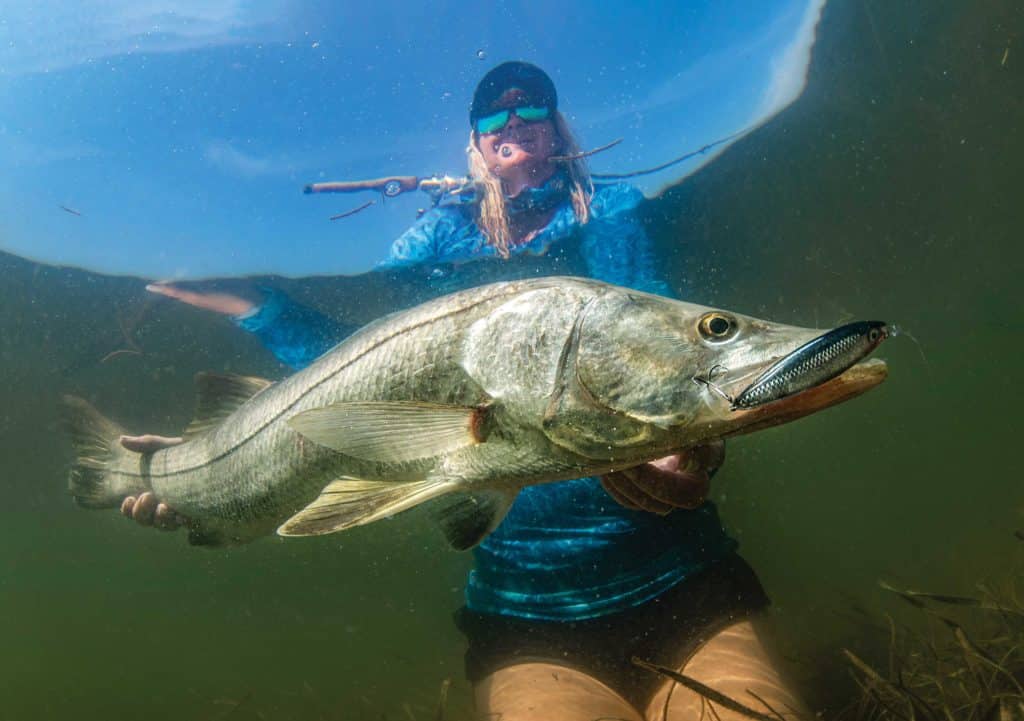
Nothing quite beats the excitement of a striped bass, seatrout or snook blowing up on the surface after your topwater plug. Even if you miss them, you’re still getting hits that you can see. It’s almost as much fun as catching them.
Now imagine the thrill of a giant bluefin tuna inhaling your lure on the surface. That’s excitement on steroids.
Even Capt. Rob Radlof, who specializes in throwing topwater lures for stripers and bluefish off the beaches, and occasionally ventures offshore for tuna from his home port in Highlands, New Jersey, was in awe after catching a 104-inch, 587-pound bluefin with a stickbait on spinning tackle.
“We were hoping to hook into 300-pound tuna. We weren’t really targeting a 600-pounder,” Radlof says, adding that it took four hours and 15 minutes to land the bluefin.
Until that fish, Radlof considered the 54-pound sow striper he caught this past spring on a muskie lure in 10 feet of water his greatest topwater catch.
“Breaking 50 pounds with a striper is a benchmark,” Radlof says, “but that was dwarfed by this tuna. I still can’t believe it.”
Grind for Bluefins
Radlof says that timing is essential for targeting tuna on stickbaits and poppers.
“Over the last few years, these giants have been showing up for a couple of days,” Radlof explains. “Usually, they show up about 5 miles off the beach and, while you’re striper fishing, you can see them exploding out there.”
That doesn’t mean you simply run out and toss a topwater at a tuna. Radlof heads to where he saw the fish, marks the bait the tuna are feeding on, and sets up a drift along the line where the fish were busting.
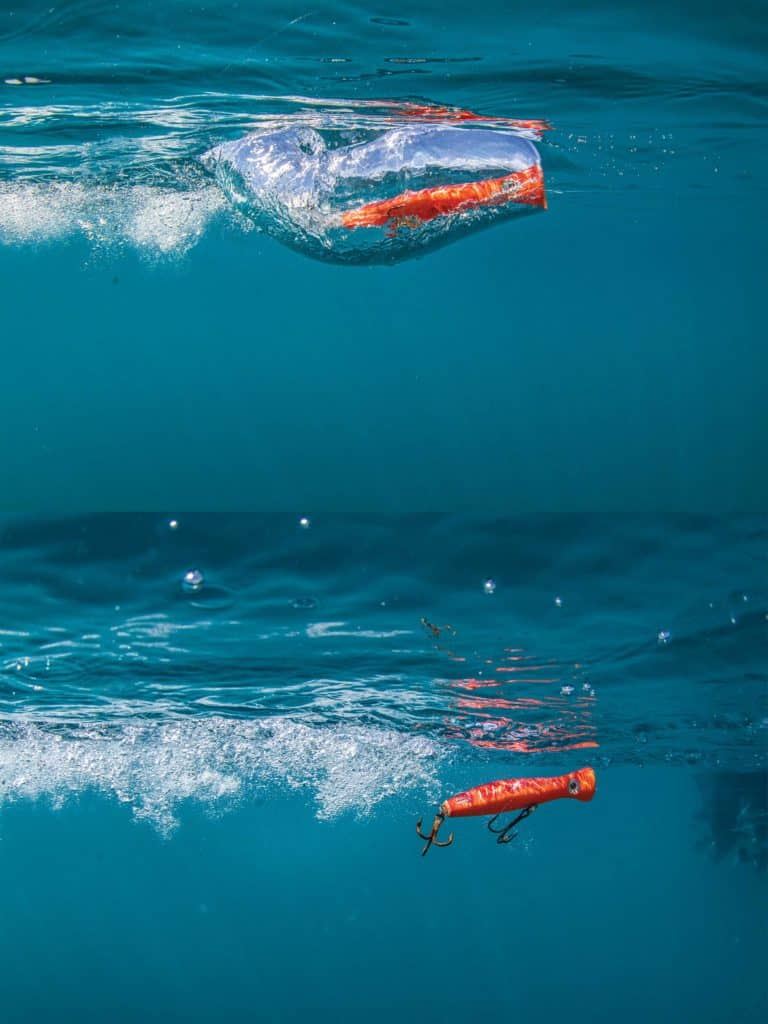
“They’re ghosts. You see one jump, and then you may never see it again,” Radlof says. “The most important thing when we’re out there fishing is you’ve got to keep casting, you’ve got to keep grinding. You’re looking for one bite, two bites. You’re not going to just throw a popper in the water and catch one.
“You’re doing long, slow pops,” he says. “These bluefin like a really slow presentation. Chug the lure really hard so it makes a huge explosion, then let that thing sit and let the fish find it. Chug it again, just let it sit there, and they’ll find it. Same with a stickbait,” he says. “Snap the slack out of the line slowly so the plug walks side to side. Just go slow and steady.”
Lure of Topwaters
Mark Nichols of D.O.A. Lures in Stuart, Florida, who started his company with a plastic shrimp imitation, says he was asked “forever and ever” when he was going to make a topwater lure. After years of research and development, he came out with the PT-7.
The PT-7 is one of Capt. Brian Barrera’s favorite lures when fishing around exposed oyster bars in Lower Laguna Madre Bay, on the southern Texas coast.
“When the tide’s just high enough, big schools of mullet feel safe on top of the bars, before the snook, trout and redfish have enough water on the bar to come in after them. They’ll hang right around it, waiting to get in there,” says Barrera of South Padre Island. “Since it’s weedless and it floats, you can cast right on top of the bar. Then on the retrieve, the PT-7 looks like a mullet venturing off the safety of the bar, and the fish come up and explode on it.”
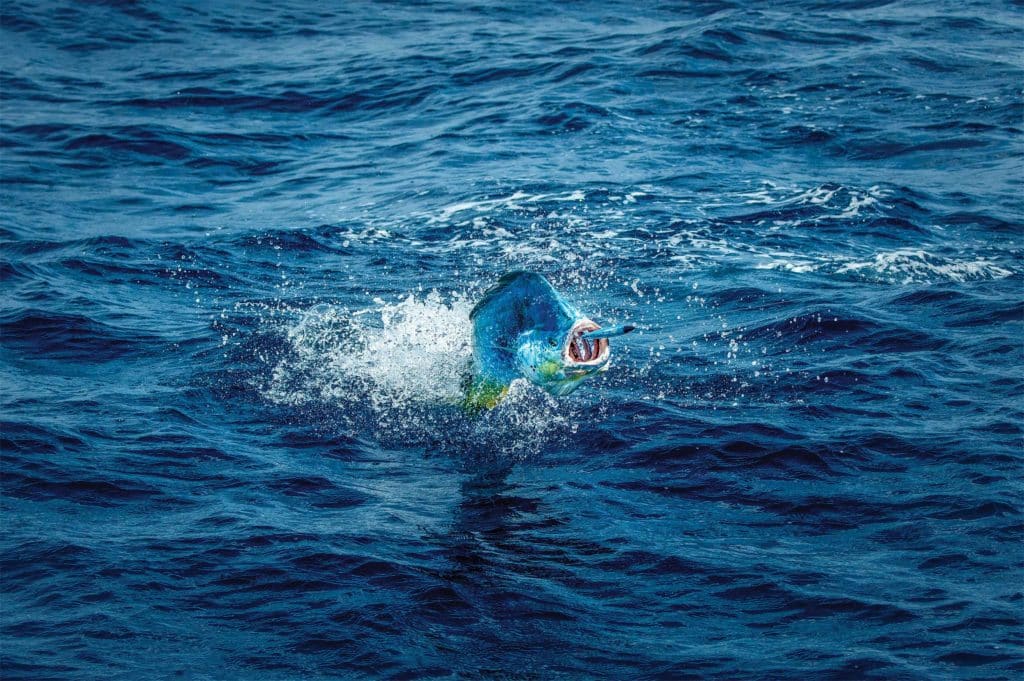
Those explosions, however, scarcely drive popularity compared to other types of lures. Dan Quinn, Rapala’s director of field promotions, says that’s likely because there’s a certain level of skill required to properly present and work a topwater lure effectively. In the case of Rapala’s Skitter Walk, that would be a zigzag, walk-the-dog retrieve, as opposed to simply casting and reeling in a jerkbait or swimbait.
“Some of our most popular lures, you really can’t fish them wrong,” Quinn says. “You can fish a topwater wrong. For that reason, they’re not the bestsellers, but they certainly hold their own, and they definitely account for some of the most exciting fishing and strikes for anyone, from expert to novice.”
Weight Wait
Capt. Matt Williams not only fishes Skitter Walks for seatrout, tarpon, striped bass and redfish on his home waters in Savannah, Georgia, but he also uses Skitter Walks with single hooks for salmon in Alaska, where he guides every summer.
“How you set the hook with topwater lures is super important,” he says. “You have to delay your reaction to the strike. I call it a stutter step. The take is so exciting, you want to rip it. Instead, you need to lift, but that lift should be a second behind the actual strike. On the take, fish pull it under the surface, so if you give them a second to do that, then lift the rod and tighten up, your hookup ratio goes way up.”
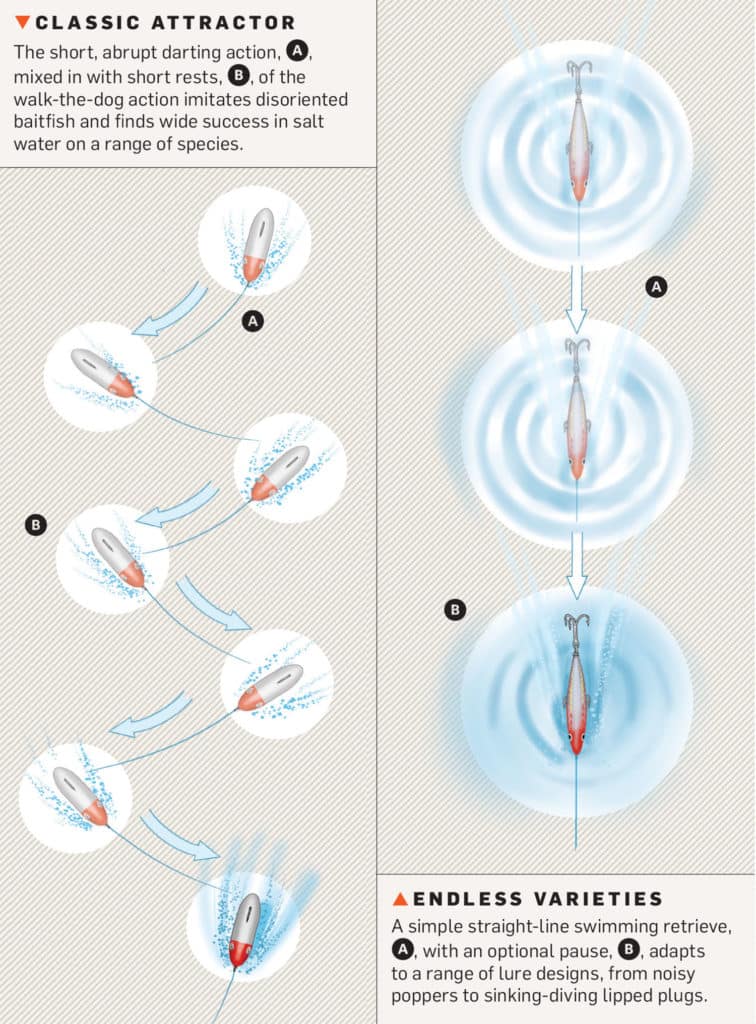
Capt. Glyn Austin, who fishes in and around Sebastian Inlet on the east coast of central Florida, has his anglers use a walk-the-dog retrieve with Skitter Walks for seatrout, redfish and snook in the Indian River.
“A lot of people, the second they see the hit, have a tendency to jerk the lure away from the fish,” he says.
“I always tell people to wait until they feel the weight of the fish. Don’t reel up, don’t stop and don’t jerk, just keep walking the dog until you feel the weight on it.
“Once you feel the weight on there, you typically don’t even have to set the hook with topwater lures.”
What do you do when a fish goes after your lure but doesn’t get hooked?
“If it’s a jack, you don’t ever stop moving the lure,” Nichols says. “I have stopped it with a trout and had them come and eat it after they struck it, but a snook seems to swim away if it sits still. With redfish, if I miss a strike, I just keep it working. They’re going to try to eat it again.”
Finding the Fish
In early spring, pre-spawn striped bass are plentiful in New Jersey’s Raritan Bay. “It’s a great fishery for fishing artificials, throwing big lipped plugs and walk-the-dog Spooks,” says Radlof, who uses his bottom machine to mark stripers in 6 to 12 feet and then blind-casts over them. In the fall, when stripers feed on sand eels, Radlof says stripers will sometimes eat a topwater plug all day. Other days, they’ll feed on the surface only in the morning.
Capt. Chris Regan of Murrells Inlet, South Carolina, likes his customers to see the fish they’re after, so cooler water temperatures are best for topwaters.
“In the wintertime, when the water is gin-clear, you can sight-cast to schools of 50 to 100 redfish,” he says. “They’re chasing menhaden, and they’re in a feeding frenzy.”
Regan adds that the more noise your plug makes, the better. “We cast past them and fish the outskirts of the school first so you don’t spook them, then work the lure toward them.”
Topwater trout fishing is good from fall into early spring. Regan sticks with the same lures, his proven favorites, even when he fishes different locations.
Read Next: Catching Redfish On Topwater Lures
“In winter, the redfish hug the mud bottoms because they hold heat,” he explains. “For trout, we fish current rips, creek mouths and oyster bars. You read the water to find those nice current rips where the trout are waiting to ambush bait. We’ll walk-the-dog for 15 to 20 feet, then reel the lure straight for 5 feet, then go back to walking the dog.”
That’s how Regan lets the fish tell him how they want the lure, and as soon as they do, his customers are hooked on topwater fishing.
SWS Tackle Box
Spinning gear takes untimely spool overruns out of the equation, but tackle for topwaters should be matched to the quarry and situation, and can range from light spinning to medium casting to heavy offshore-ready gear. In all cases, rod length is helpful, and rods should have enough front-end flex to impart action to the lure.
Rods: 7- to 8-foot spinning rods, matched to target species and lure weight
Reels: 3000- and 4000-size spinning reels inshore, 6000- to 10000-size off the beach; 18000-size for tuna
Line: 10- to 100-pound braid matched to conditions; 30- to 40-pound fluoro leaders inshore, up to 175-pound fluoro leader for tuna
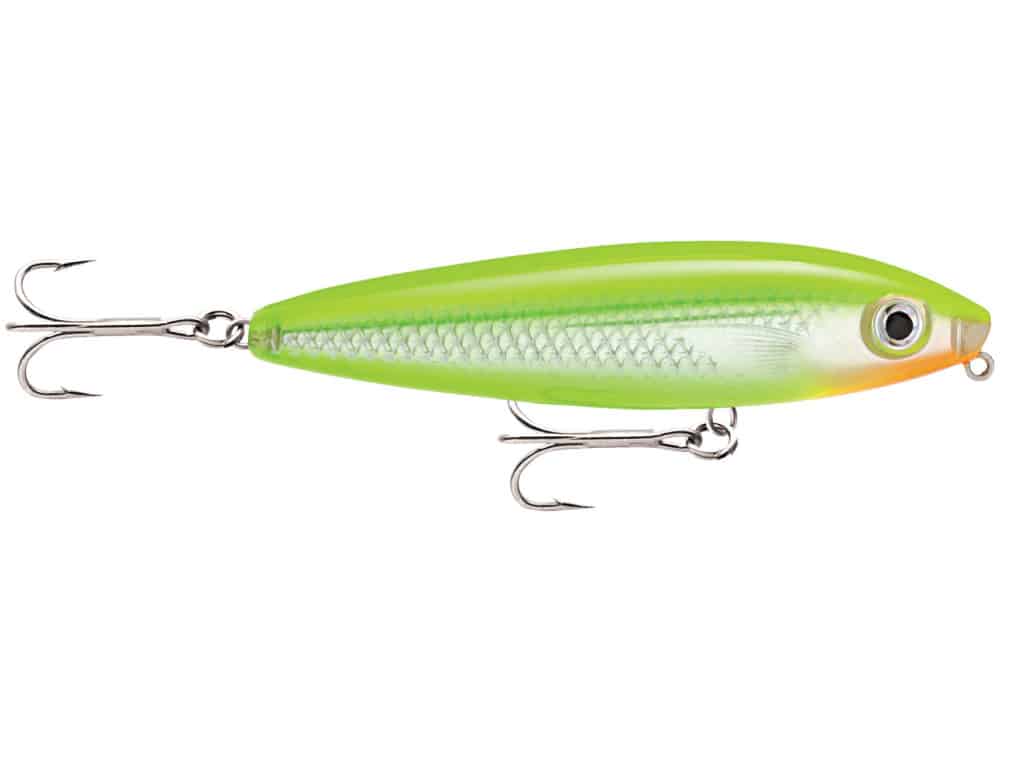
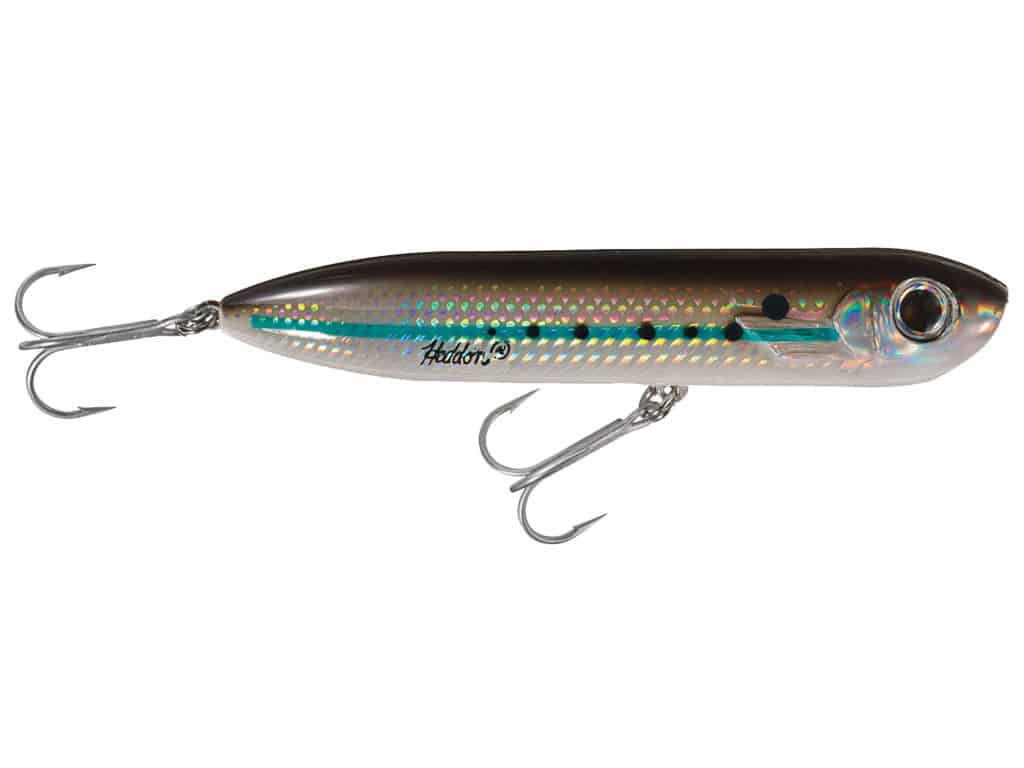
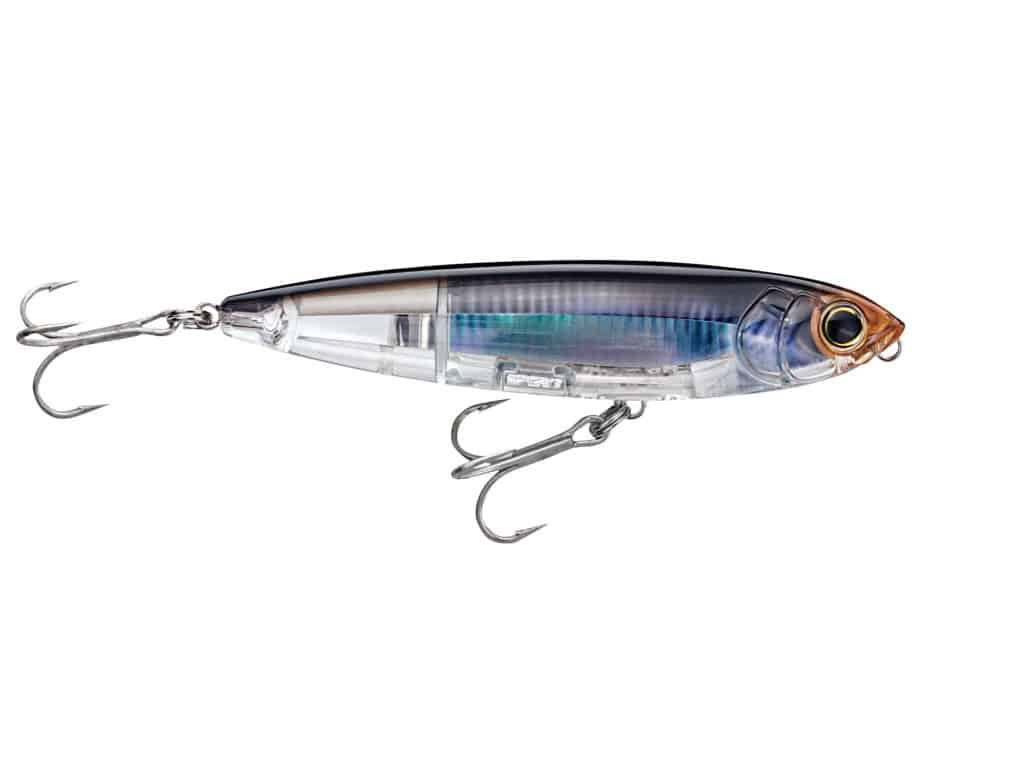
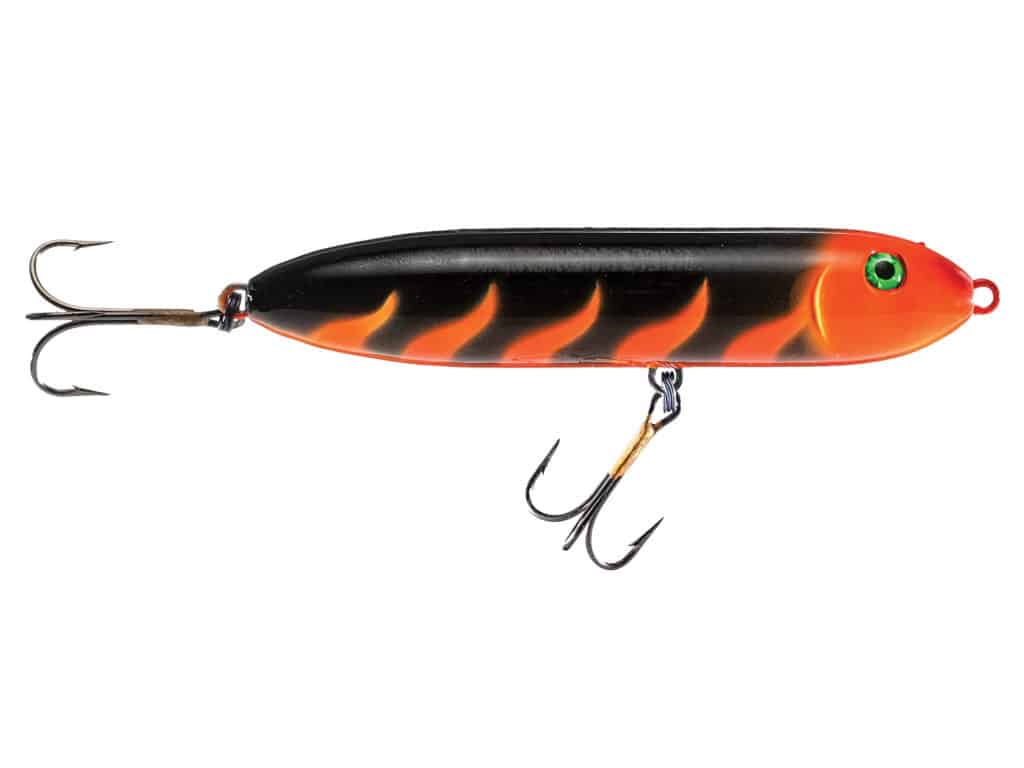
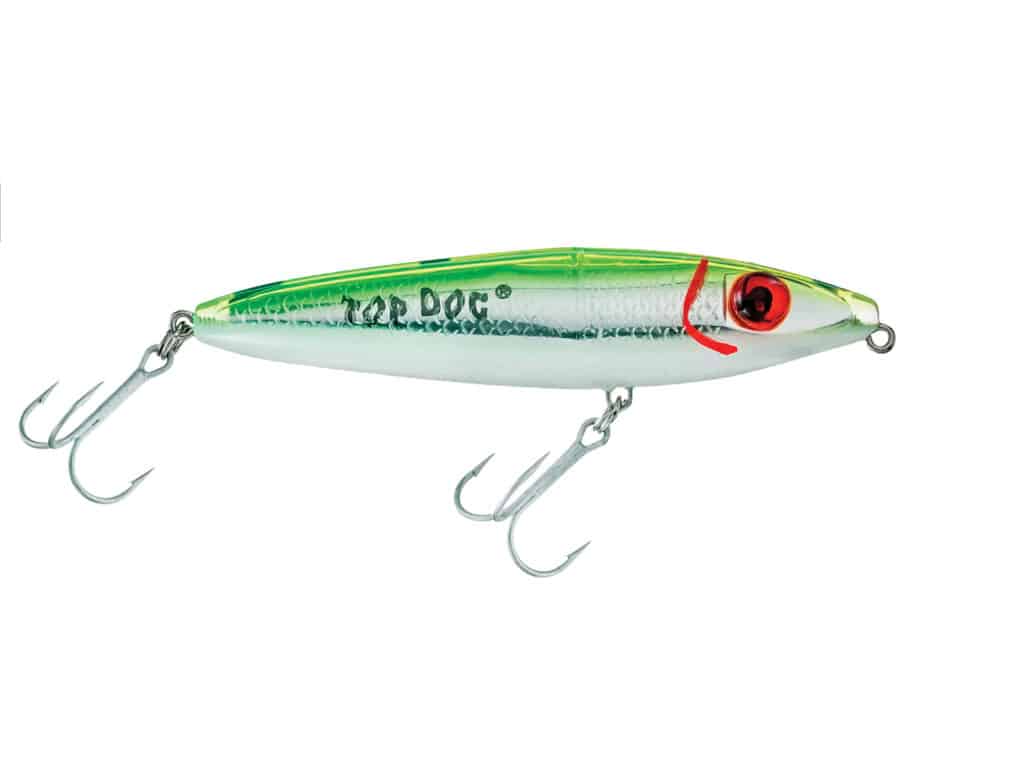
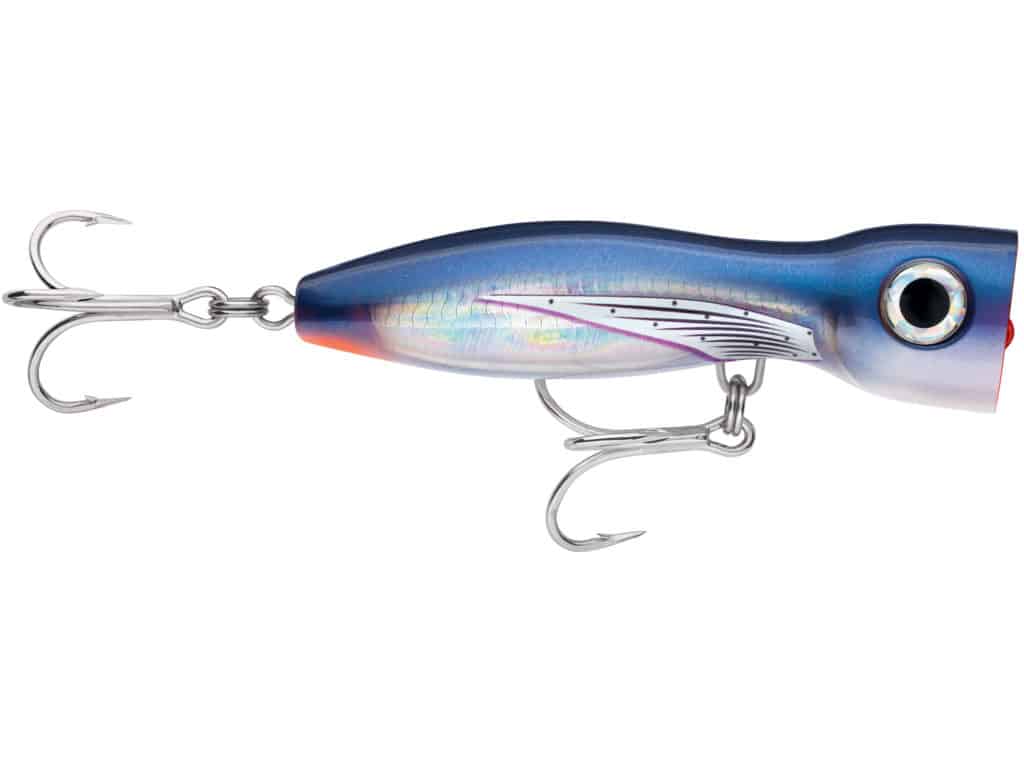
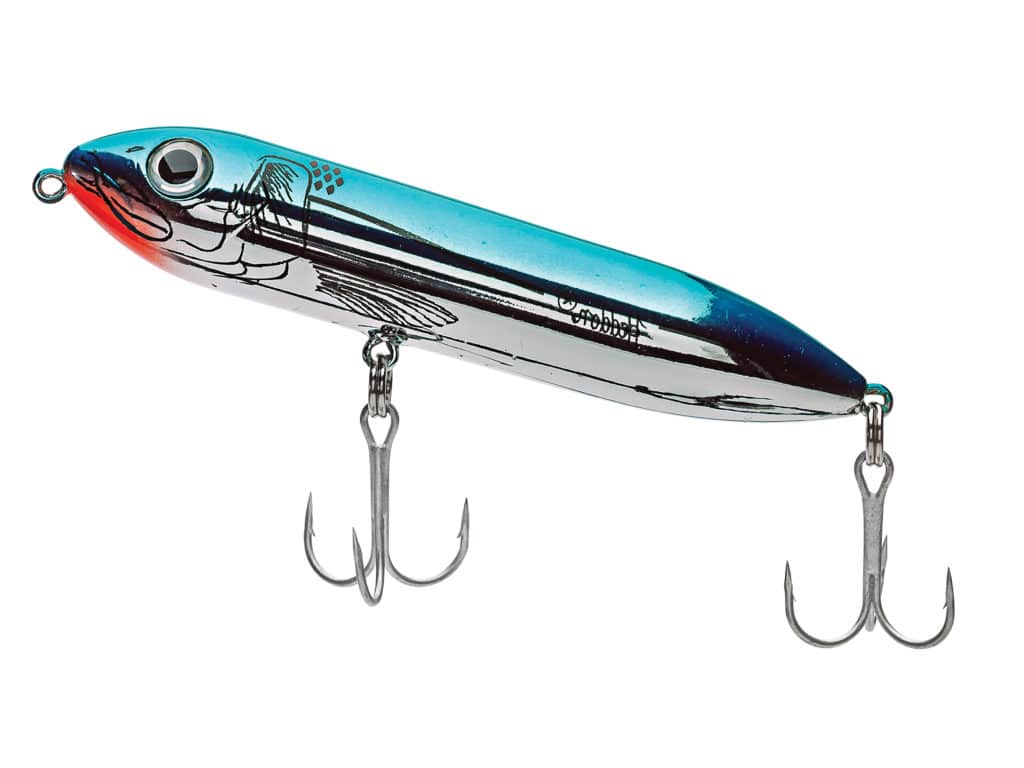
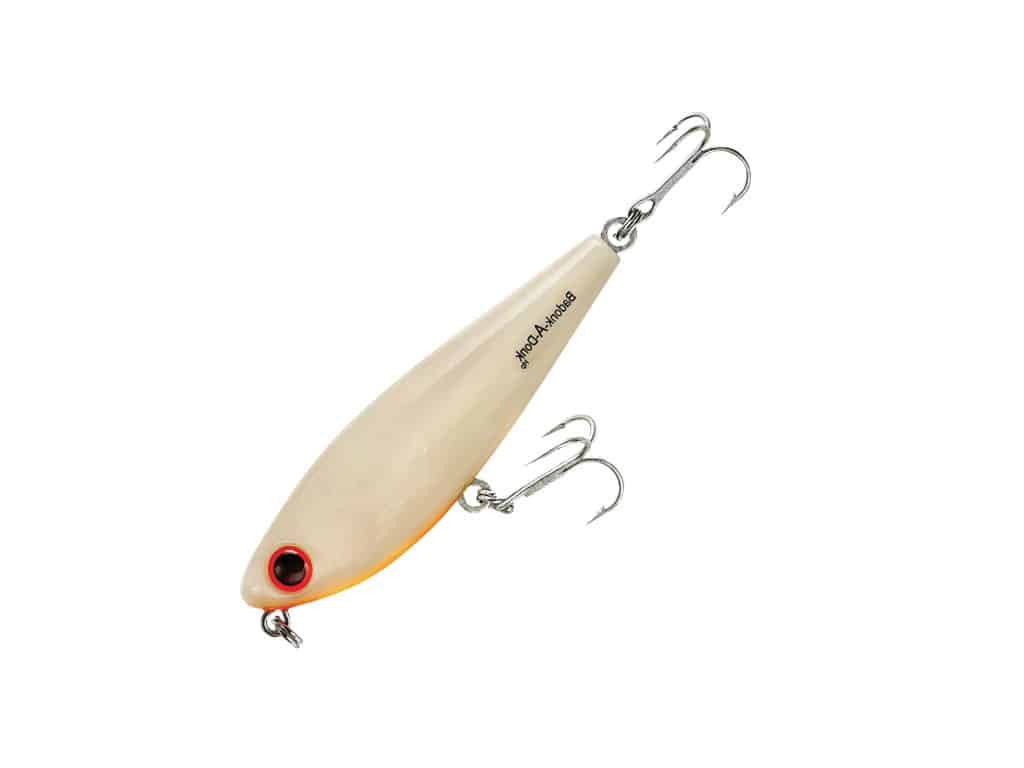
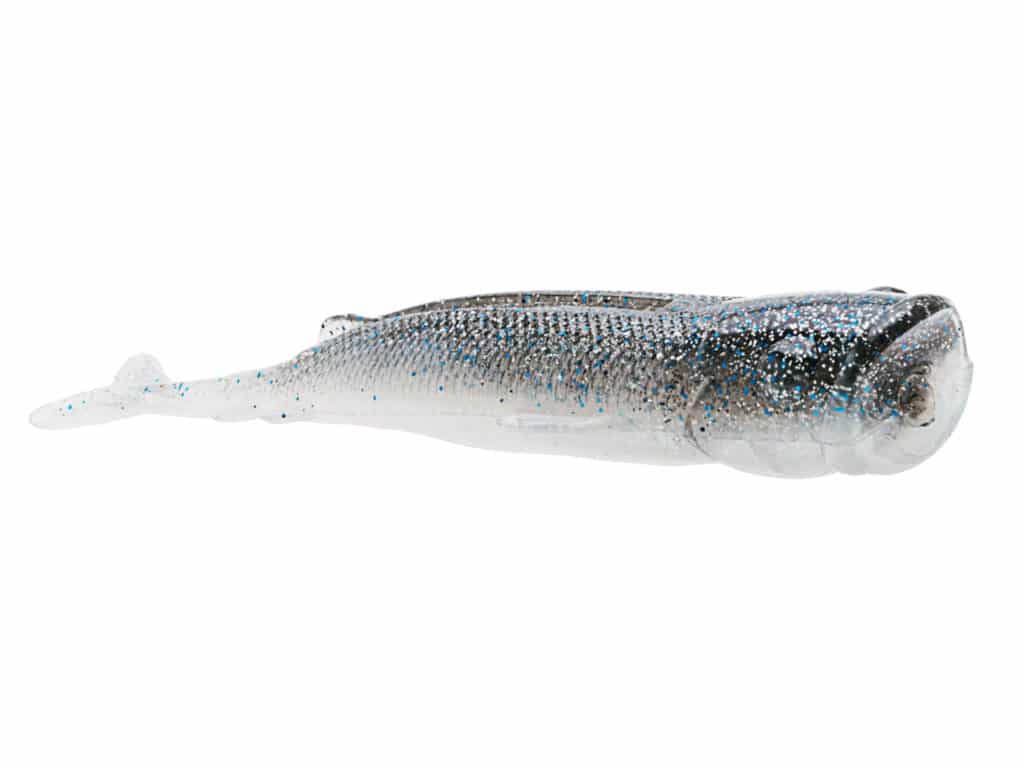
Lures: Rapala Skitter Walk, X-Rap Magnum Xplode popper, Doc Plug by Musky Mania, Amegari Dzanga popper, CB One Drifter stickbait, Heddon Saltwater Spook, Super Spook Jr. and Chug’n Spook, Yo-Zuri TopKnock Pencil, Bomber Badonk-A-Donk, MirrOlure Top Dog and D.O.A. PT-7, among others









